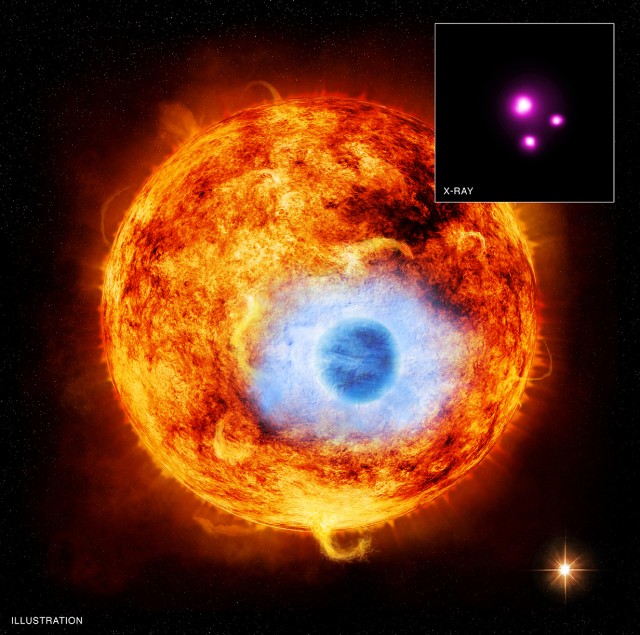X-rays capture hot Jupiter being evaporated by its host star
Ars Technica » Scientific Method 2013-07-30

Spotting a planet that transits in front of its host star is old news thanks to the Kepler probe—Kepler has probably spotted over 2,000 of them. But this week, scientists announced the first time a planetary transit was observed using X-rays. Although the data from X-rays is harder to interpret than that of a visible-light transit, it has also told us more: specifically, that the planet may be in the process of evaporating away.
The planet in question, HD 189733b, is a hot Jupiter (a gas giant that orbits close to its host star) that had previously been identified by other observatories. This is a good thing, since it turns out that X-rays would be lousy at planet identification. In many cases, X-rays are produced by individual features on a star's surface, and these features are both transient and rotate along with the star, meaning that they come and go from our field of view. This makes the X-ray background from a star very noisy, which makes picking out the loss of some of those X-rays (caused by the plant blocking them) rather challenging.
Spotting the HD 189733b's transit required seven separate observations, six from NASA's Chandra Observatory and one from the ESA's XMM-Newton. Even though the researchers knew there was a planet there and when it was going to be orbiting, they were only 98 percent sure they were detecting the planet's transit. After they inspected the data visually for signs of a stellar flare and eliminated some of the observations that seemed to involve such a flare, they were able to boost their certainty to 99.8 percent.
Read 5 remaining paragraphs | Comments




